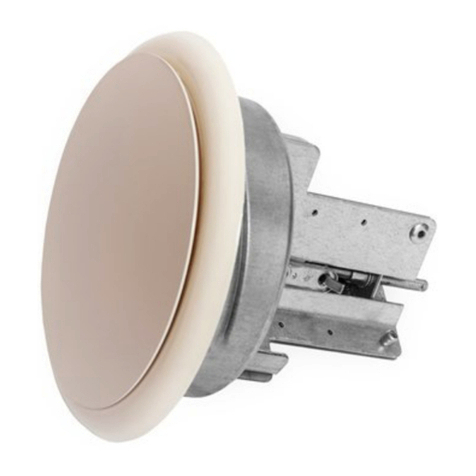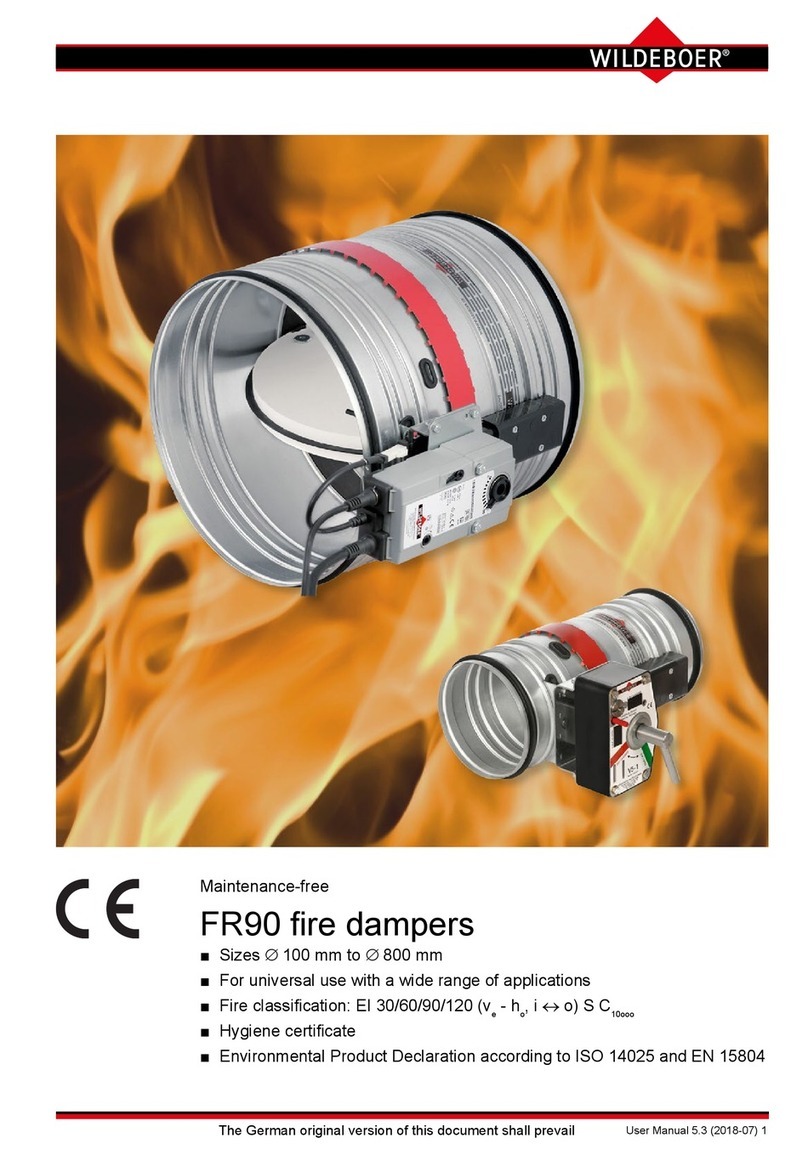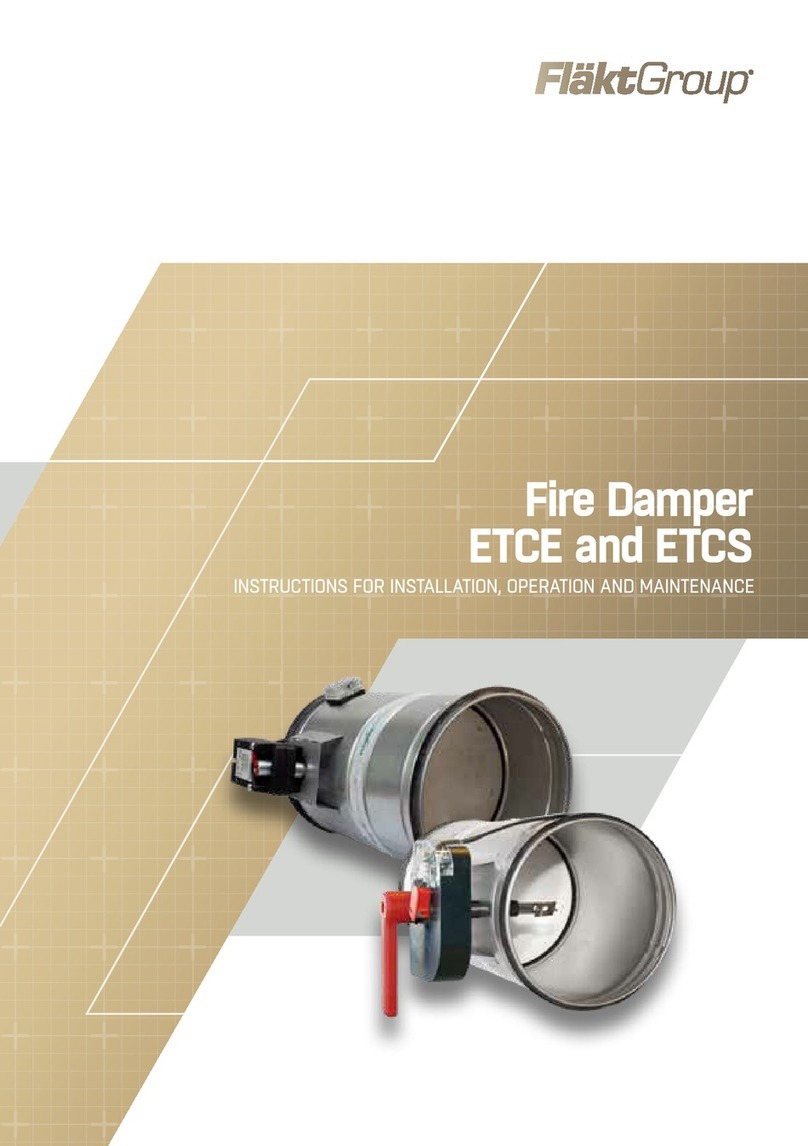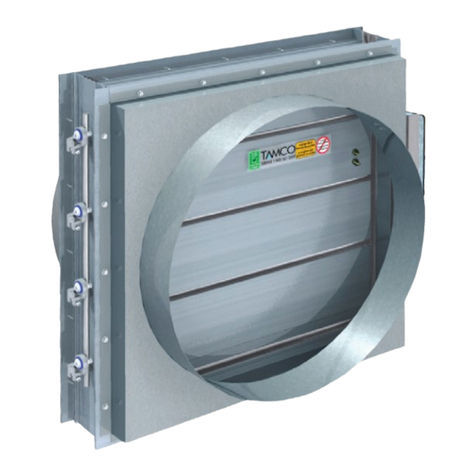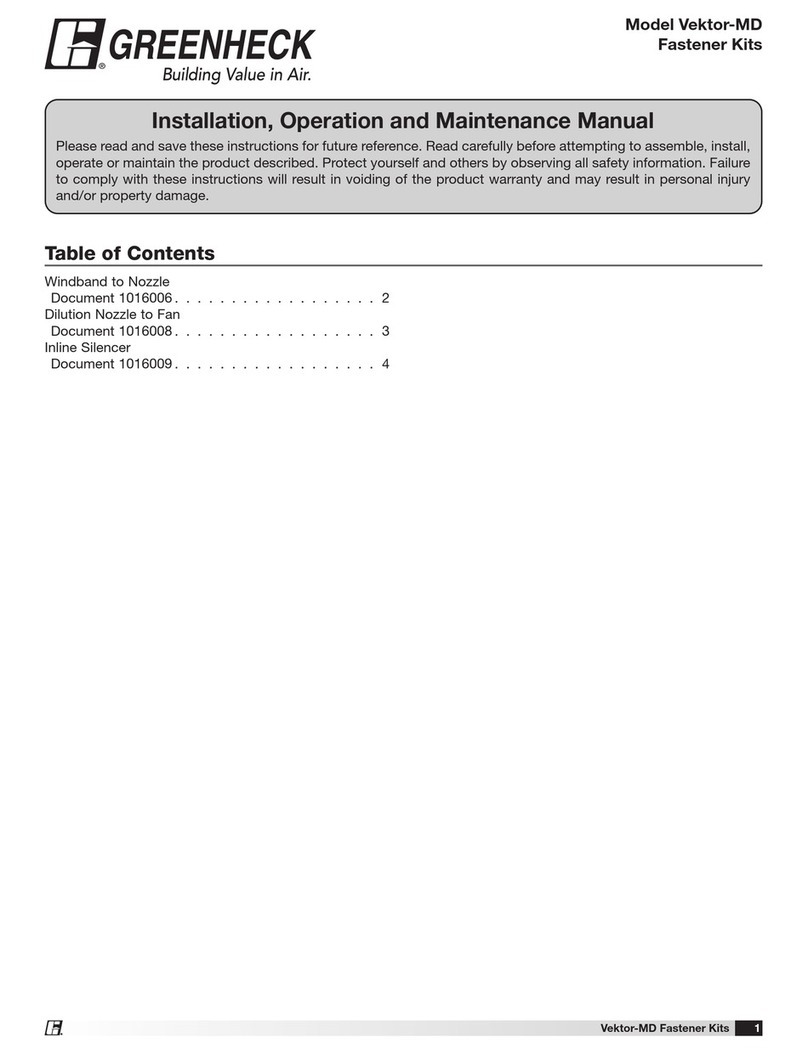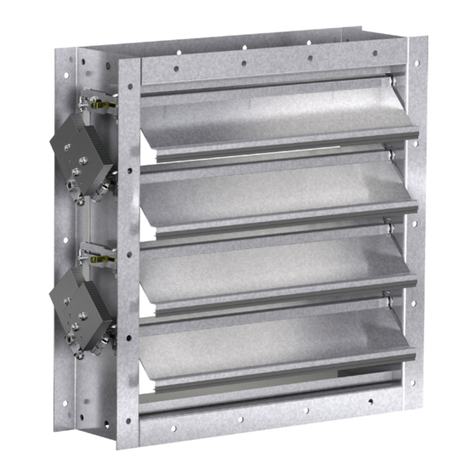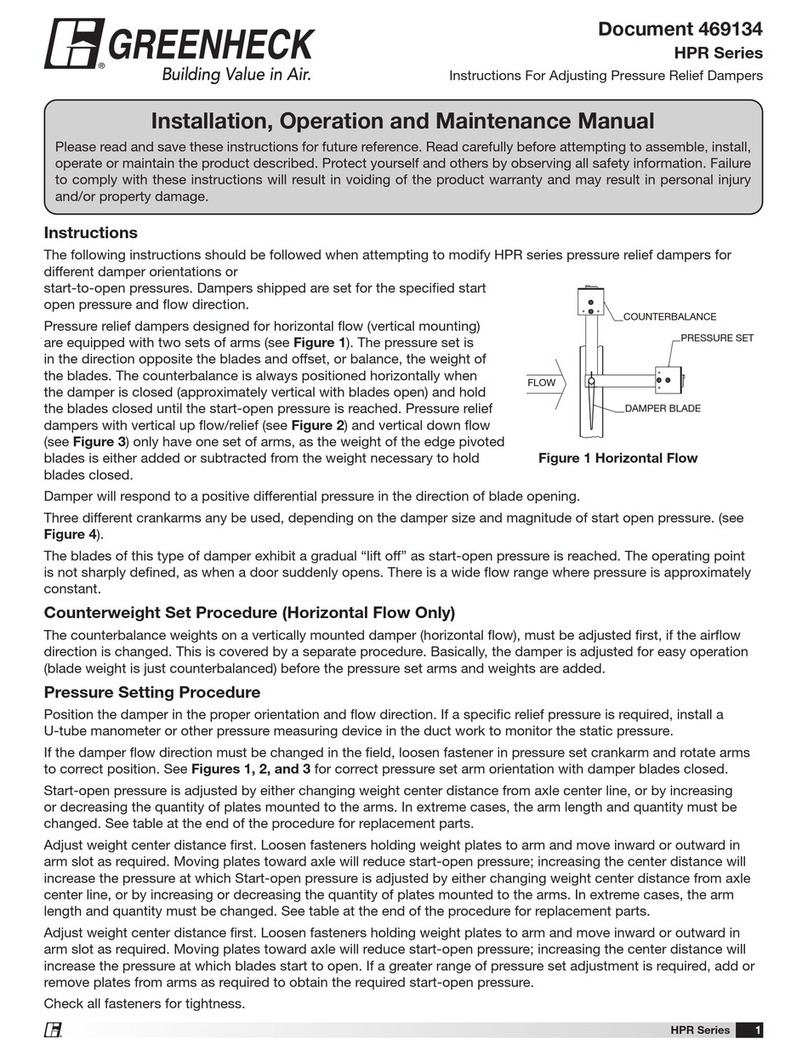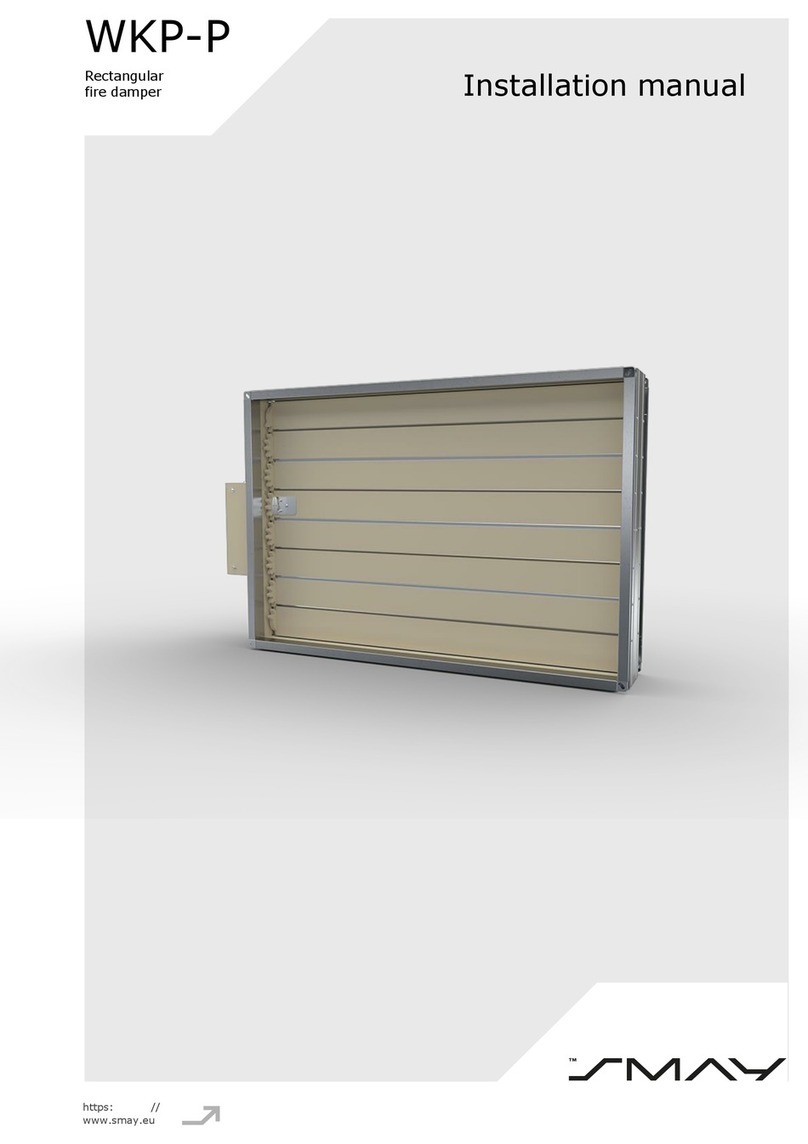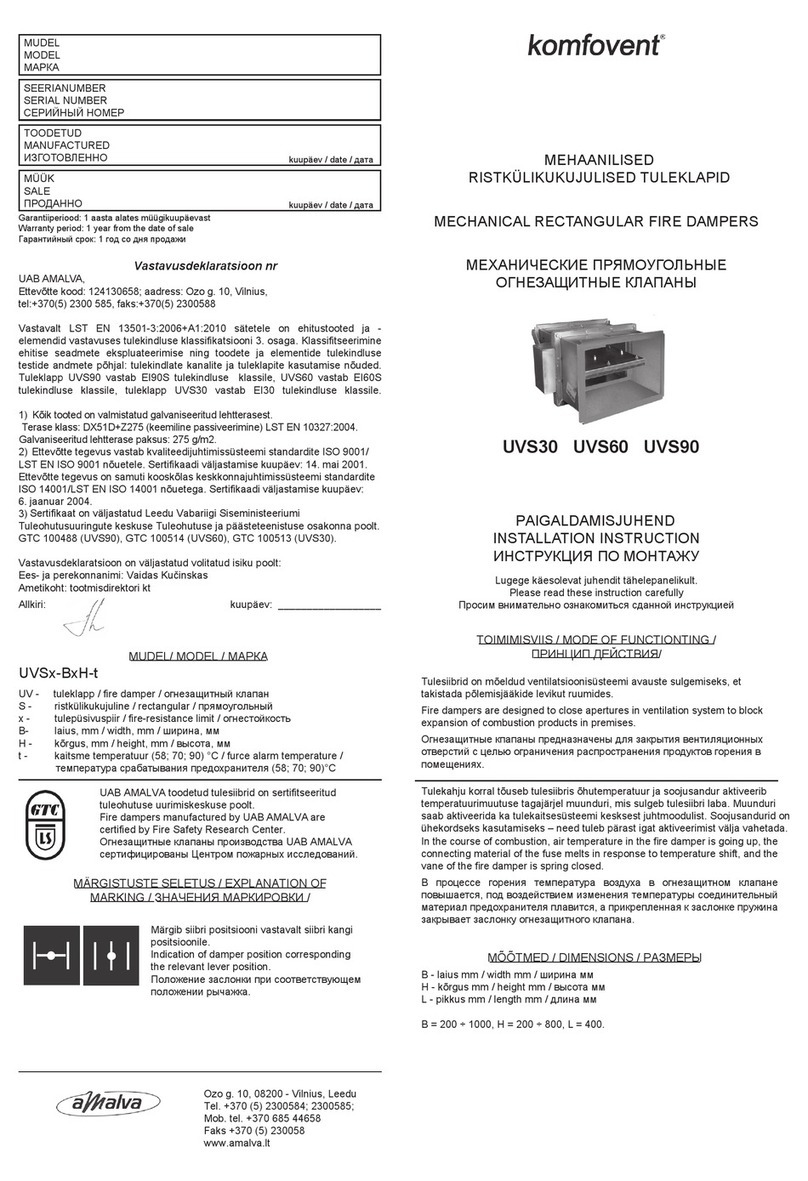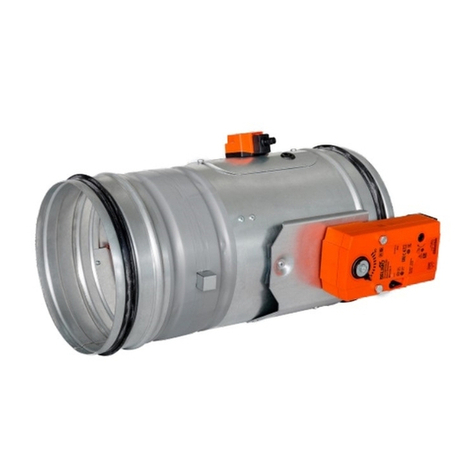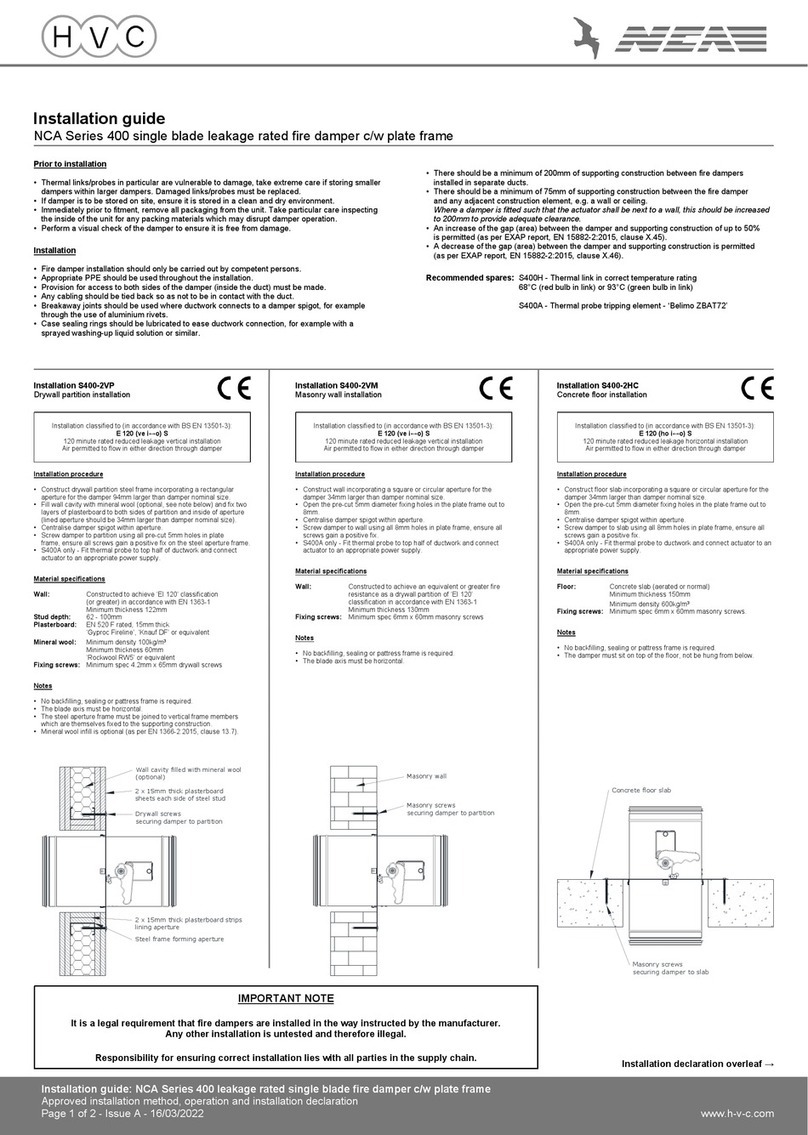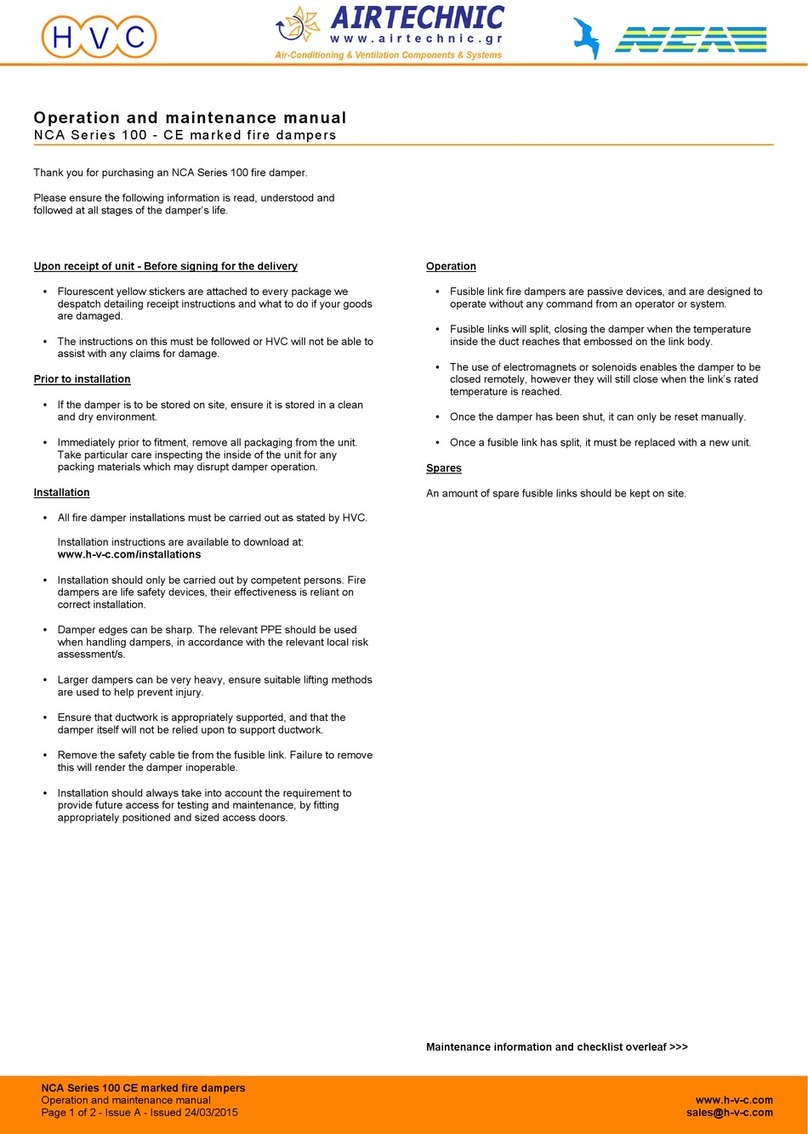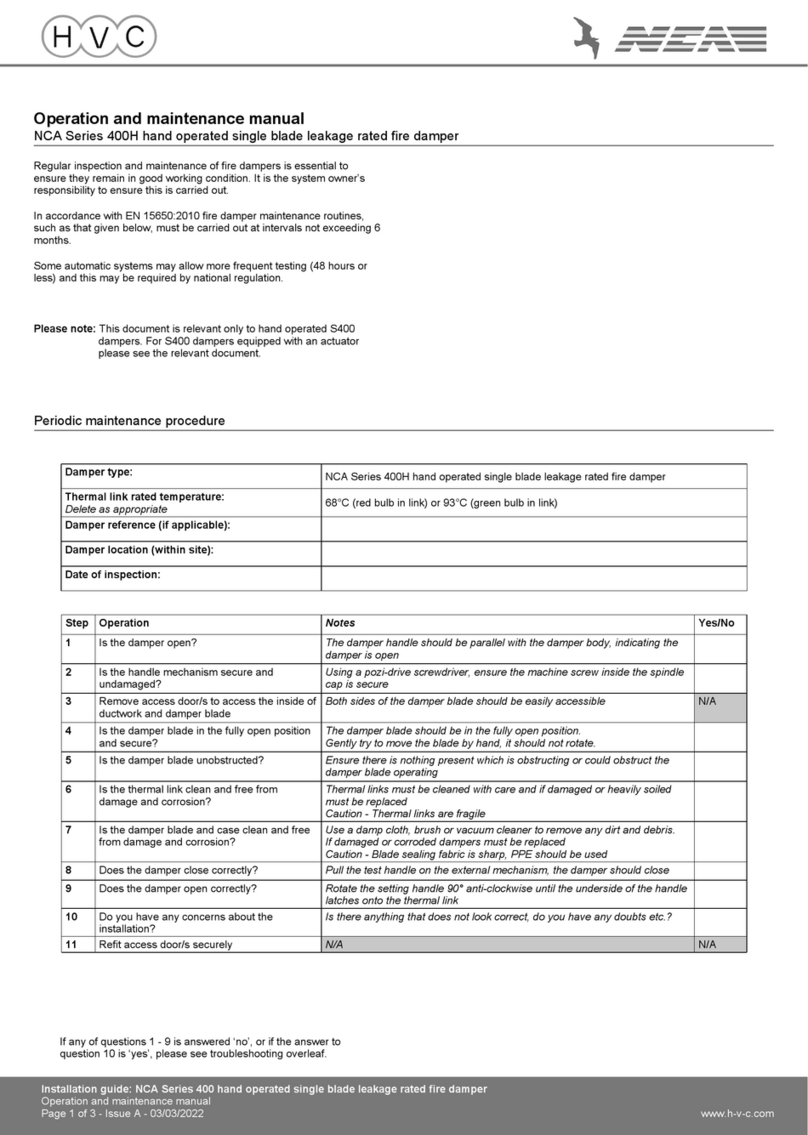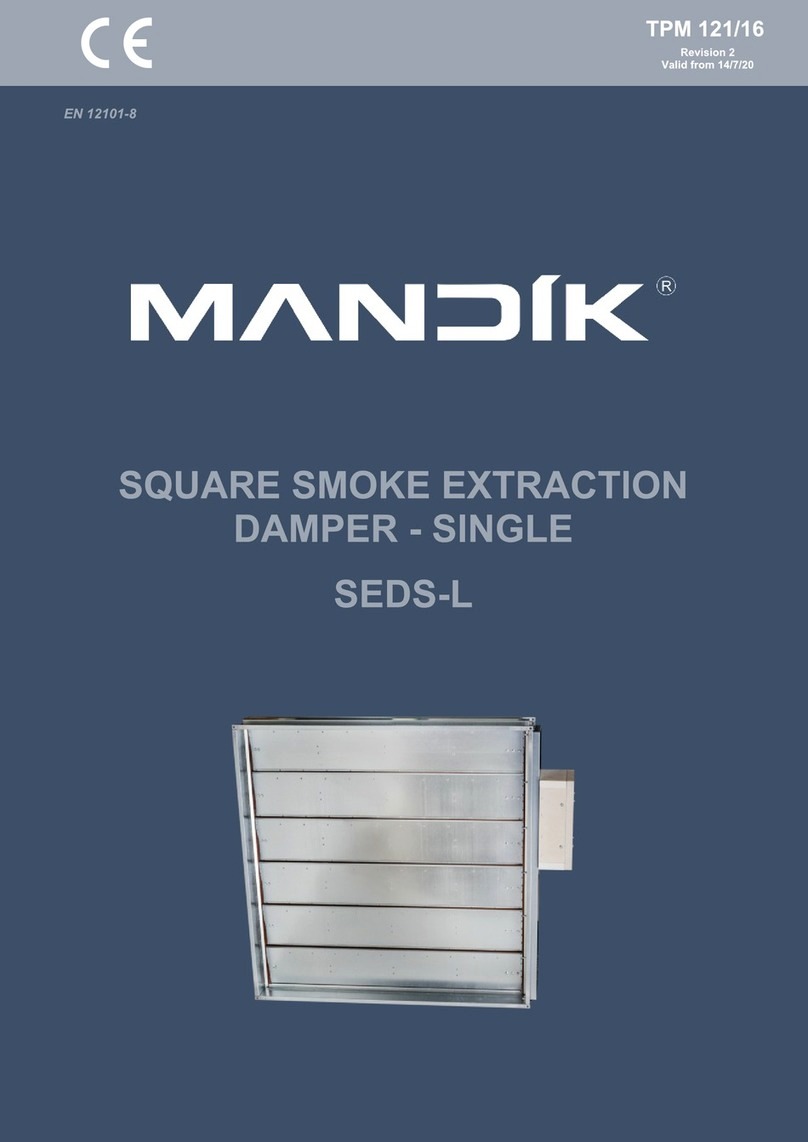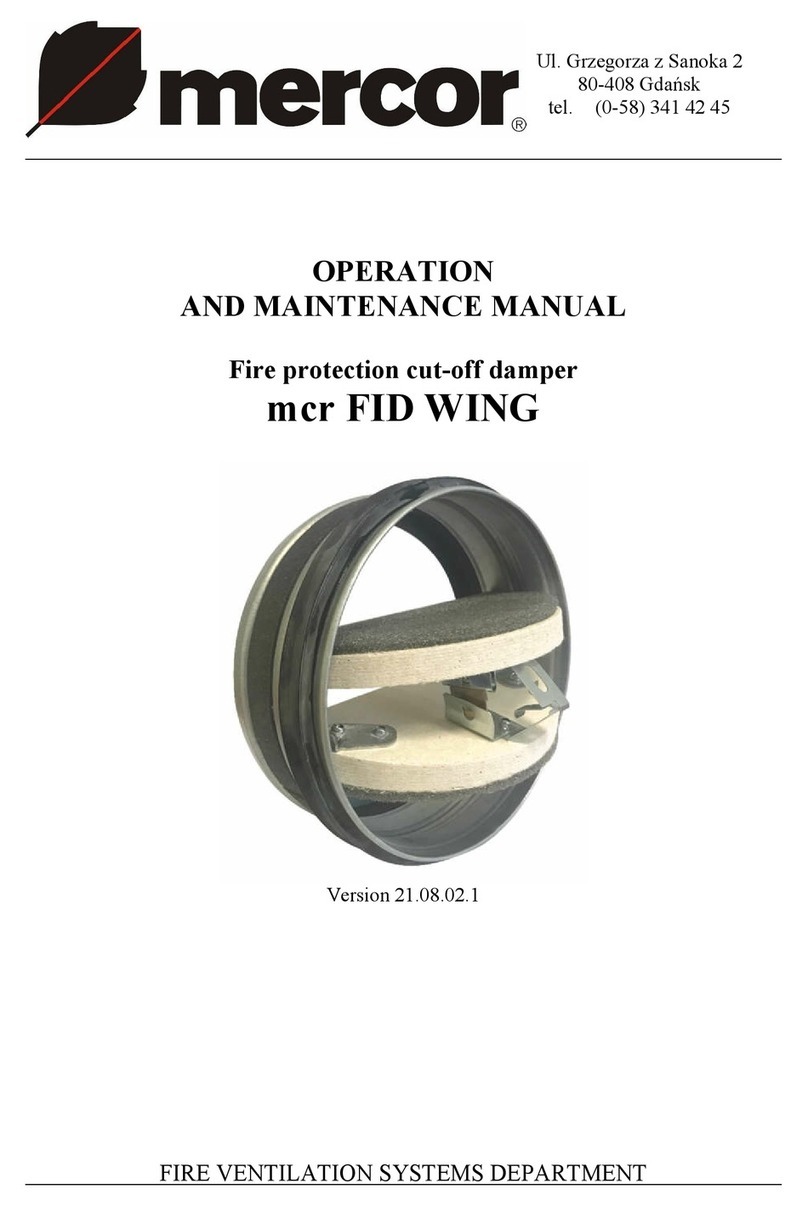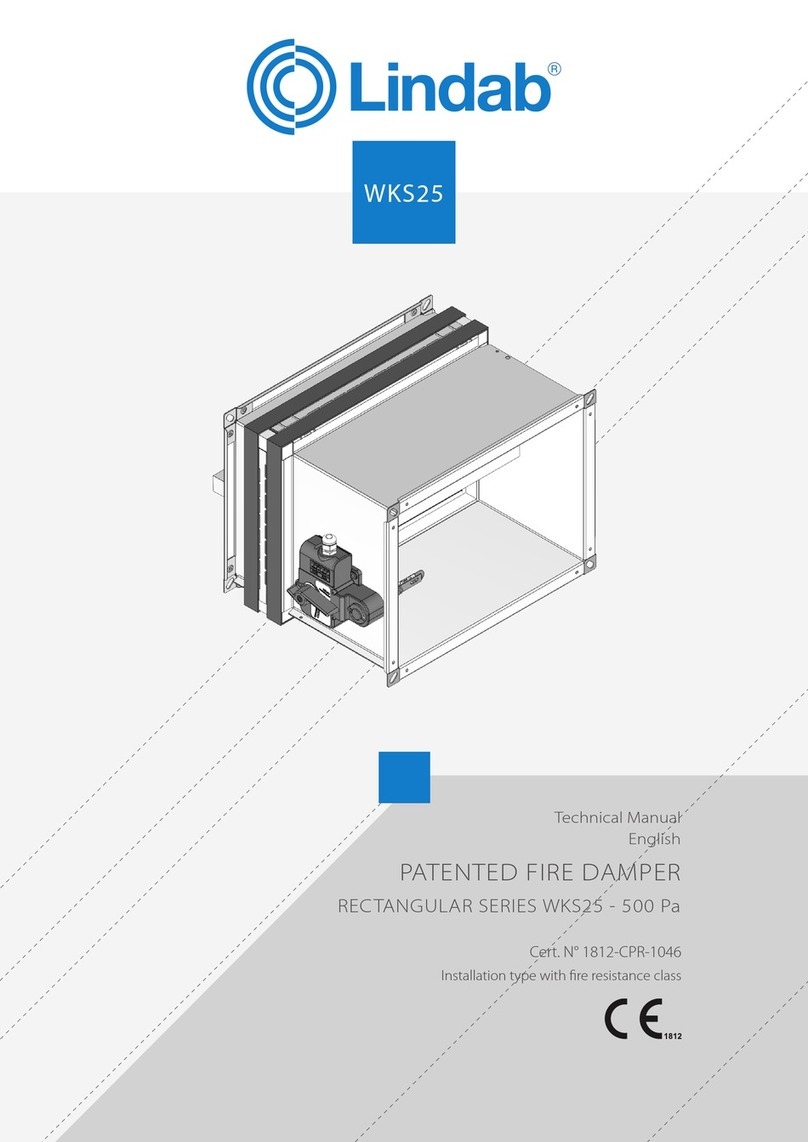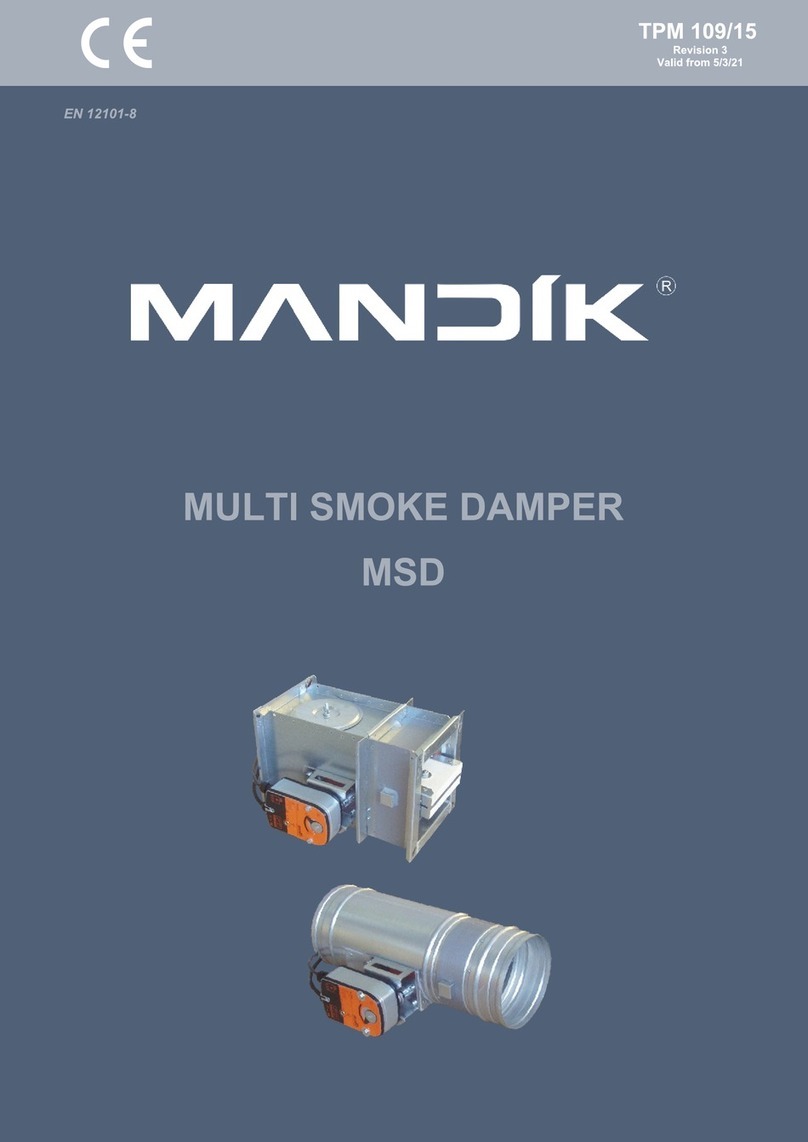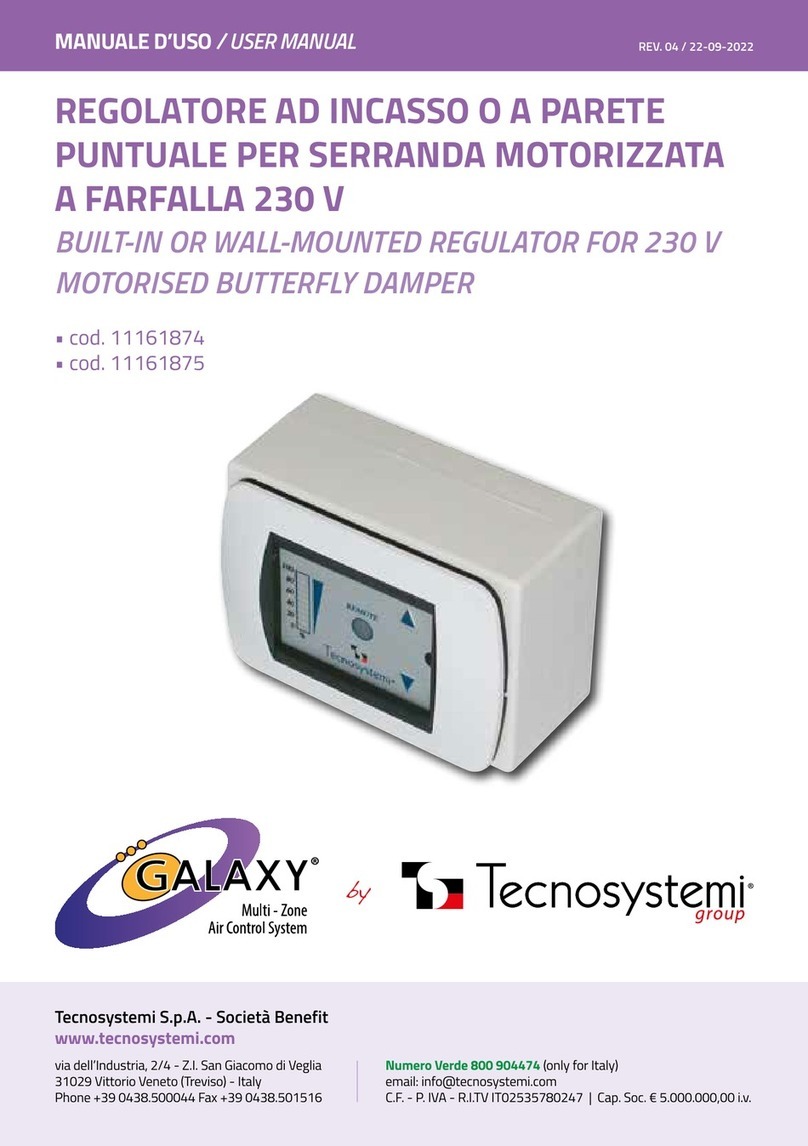
www.h-v-c.com
NCA S100 Fire dampers
O & M
2
Prior to installation
ŸIf damper is to be stored on site, ensure it is stored in a clean, dry environment.
ŸJust before fitting, remove all packaging from the unit, any packing materials left inside the damper may prevent
operation.
ŸPerform a visual check on the unit to ensure no damage has been sustained during transit. This includes checking for
dents, warping etc.
Installation
ŸInstallation must only be carried out be competant persons, fire dampers are life safety devices, their effectiveness
relies on correct fitment.
ŸRemove the safety cable tie. Failure to remove this will result in the damper being unable to operate in the event of fire.
ŸSpigot edges can be sharp, personal protective equipment must be worn when handling dampers.
ŸLarger dampers can be very heavy, ensure suitable lifting methods are used to help avoid injury.
ŸEnsure damper is free of all foreign matter.
ŸEnsure that the damper is adequately supported, ductwork must not be used as a support structure.
ŸAll fire damper installations must satisfy all relevant building standard or fire authorities.
Normal maintenance
We recommend performing the steps below atleast once per year, ideally more frequently. Local conditions may
cause more frequent cleaning to be required, for example if there is a large amount of airborne dust from a nearby quarry
of building site.
ŸPerform a visual check inside the damper, ensuring the damper is free of any foreign items.
ŸIf possible release the blades to test operation. Be careful when replacing link to ensure correct fitment.
ŸIf there has been a build up of dust, wipe the inside of the unit with a dry cloth. Do not introduce moisture to the
damper.
ŸDo not use any oils to lubricate the damper, it has been designed to operate without lubrication and oil will attract dust.
ŸTest the working condition of any solenoids/electromagnets if fitted.
Any work conducted should be recorded in the relevant building maintenance log.
